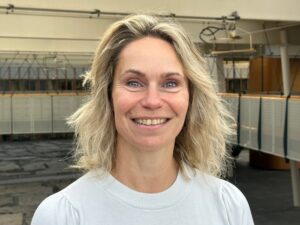Da Vinci Project
Initiated at Utrecht University, this educational experiment aims to educate sustainability change-makers through hands-on learning by prototyping and iterative testing in real-world settings, fostering a “fail forward” mentality. Confident change-makers who know how to act in uncertain and complex environments, creative innovators who are aware of their talents and expertise, and collaborators who are aware of their relationship to the real world.
Guided by the principles of transdisciplinary challenge-based learning, design thinking, systems thinking and interdisciplinary research, students from various backgrounds work together in interdisciplinary innovation teams to tackle sustainability issues with societal partners.
Through a variety of activities, such as coaching, workshops, expert meetings and presentations, students work through the problem-solving process from a briefing on the challenge to a validated prototype for the solution.
Design Thinking pedagogy
A study on the Da Vinci Project’s learning outcomes has shown that students develop skills and mindsets that align with the Inner Development Goals and the Design Thinking pedagogy. Empathy and framing are emphasised as vital aspects.
Empathy is crucial, because you can only develop successful solutions when you gain a deep understanding of the people you design for. Another central feature is framing, the activity of generating multiple equally valid interpretations of the problem. Deliberately developing and exploring frames systematically helps students become aware of and deal with complexity, and to transcend disciplinary boundaries.
One of the inspiring things of the Da Vinci Project is that both scientific knowledge and soft skills can be used to find a solution to a problem.
Fieke Sluijs

Researcher and Educational Designer at Utrecht University
“After many years of learning experience design, I carry a huge collection of tools with me. They are the building blocks for designing meaningful learning experiences. Therefore, we apply several tools for a strategic sequence of learning activities, such as a creative technique called brainwriting, embodied learning to foster resilience, and techniques to train deep listening. In the DaVinci Project, students learn the lesson of failing forward. Students learn from creating something: by prototyping and testing in the real world, going back to the drawing table to adapt the prototype and testing it again, students learn more than they can imagine. Seeing everything you do as a prototype can be a very liberating thought.”
Course outline
In the Da Vinci Project, the Design Thinking approach follows the Stanford model’s five steps: empathise, define, ideate, prototype and test. Students learn about these five steps during workshops and apply them to solve the challenge proposed by the stakeholders, ranging from the private sector to local and national governmental bodies.
The teams meet several sustainability experts from various fields. During interactive College Tours, the experts share their journey, and at the Dragon’s Den and the Expert Meeting, they give feedback on the teams’ progress.
Students learn to build resilience during a Taekwondo workshop, and at the end of the course, students present their prototypes to the stakeholders at the Prototype Party.
Learning outcomes
- the student is able to collaborate in a transdisciplinary environment and engage in co-creation within the team in a multiple-stakeholder context
- the student is able to navigate the uncertainty and complexity of the problem-solution space of sustainability challenges
- the student is able to use the gained creative confidence and resilience to drive innovation
- the student is able to conduct a sustainability problem analysis from a human-centred perspective
- the student is able to frame insights from qualitative research in multiple inspiring ways
- the student is able to reflect on personal skills, insights and behaviour in relation to the problem-solving process in an interdisciplinary team
- the student is able to think critically about the process of sustainability problem-solving in an interdisciplinary team
- the student is able to provide constructive feedback and is open to receive feedback from others
- the student is able to engage and motivate team members and stakeholders in the problem-solving process
